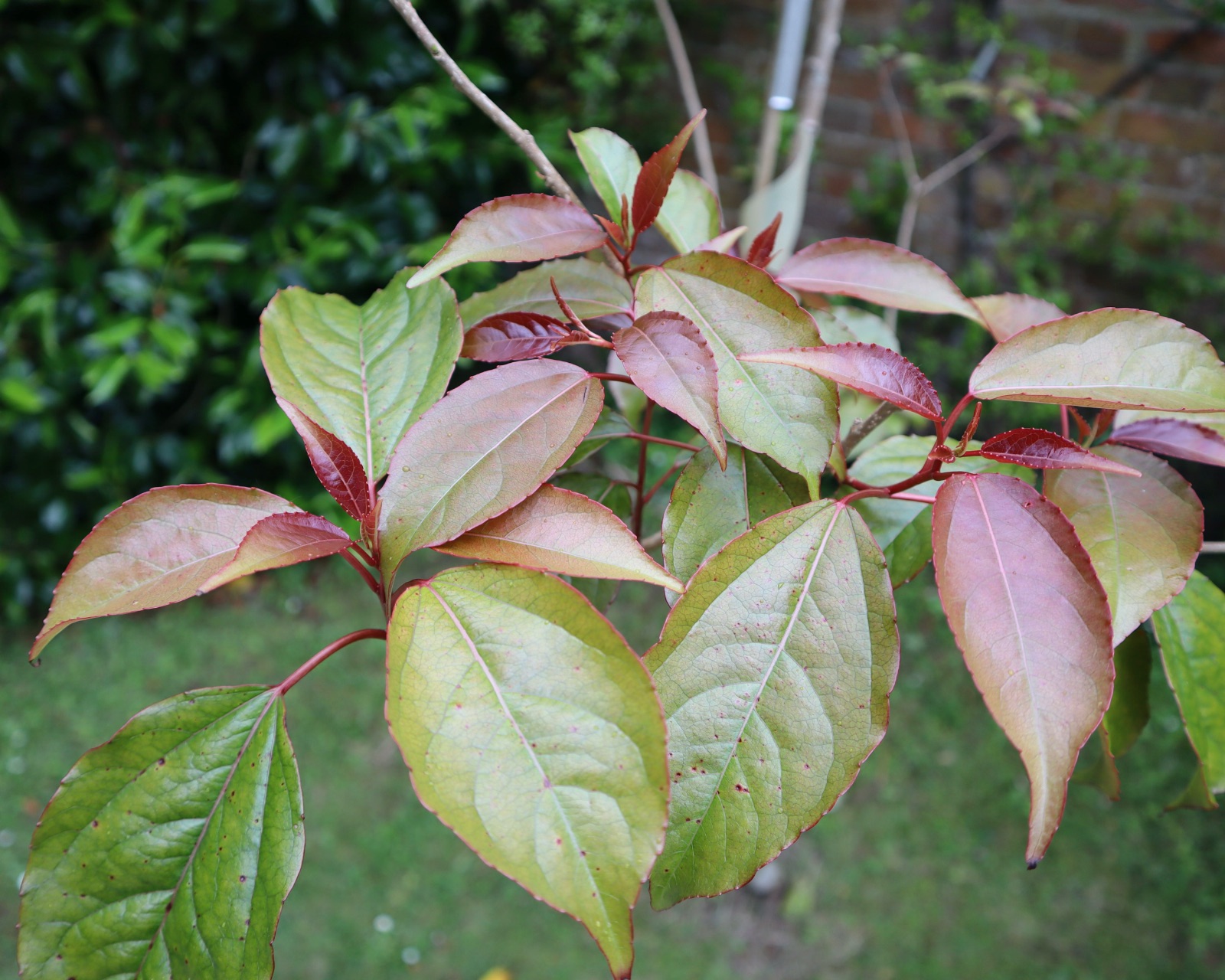Carrierea
Sponsor
Kindly sponsored by
William & Griselda Kerr
Credits
Owen Johnson (2022)
Recommended citation
Johnson, O. (2022), 'Carrierea' from the website Trees and Shrubs Online (treesandshrubsonline.
Family
- Salicaceae
Common Names
- Goat-horn Trees
A genus of two species of deciduous tree. Bark smooth, greyish, with darker lenticels. Leaves alternate, long-stalked, 3-veined from the base; margin with large, rounded, glandular teeth. Plants usually dioecious; flowers c. 3–10 in terminal or axillary panicles or racemes, sweetly scented, with bracts and persistent greenish bracteoles below each pedicel joint. Sepals 5, nearly free, pubescent, papery, greeny-white or rarely blush, to 2 cm long, laterally folded (conduplicate) as they expand; petals absent. Male flowers with many stamens on a domed receptacle. Female flowers slightly smaller, with many staminoides; styles 3 or 4, very short. Fruit-pod narrowly ovoid to horn-shaped, to 8 cm long, thinly woody, with 3 valves that split from the apex and the base. Seeds many, stacked inside the pod, each flattened, c. 5 mm wide, but with a larger papery wing at one end. (Flora of China 2022).
Carrierea is very distinct in its heads of quite large, scented, creamy-white flowers, each of whose sepals has a curious and memorable pleated appearance, and in its horn-like seed-pods which have given these trees the vernacular Mandarin name of shan yang jiao shu shu, or ‘goat-horn trees’ (Drinkwater 2010). Its closest hardy allies are also quite easy to guess, and share the long-stalked elegant, waxy-surfaced, glandular-toothed leaves with three or five veins diverging from the base – Idesia, Poliothyrsis and Itoa; all these trees are east Asian in origin. Carrierea has the largest and showest individual flowers of this little group.
The genus was named by Adrien René Franchet in 1896 and commemorates another French dendrologist, Élie-Abel Carrière, who had died that year. No subsequent botanists have questioned the integrity of the genus, but its family allegience only grew clear when phylogenetic analysis became available as a botanical tool. Carrierea and its close allies had traditionally been placed within Flacourtiaceae, but by the later twentieth century it had been admitted that this entity was no more than a convenient dumping-ground for a range of plants whose true allegiance was not obvious and the family is now defunct. It is now recognised that Carrierea belongs in the Willow Family, Salicaceae, and is quite close in evolutionary terms to the poplars and willows themselves (Zhang, Zeng & Liu 2021). Perhaps the only macroscopic clues to this relationship are the long poplar-like leafstalks and the tendency for male and female flowers – which lack petals – to be carried by separate trees, though a few Asiatic willows, such as Salix magnifica, do have the same kind of elegance in their foliage.
As many as four species of Carrierea have been described, but the genus is currently understood to have just two representatives, of which only C. calycina is at all familiar to western gardeners. C. dunniana Léveillé has slightly smaller flowers and seeds and leaves that are significantly more than twice as long as broad, and its distribution extends south from China into northern Vietnam (Flora of China 2022).




